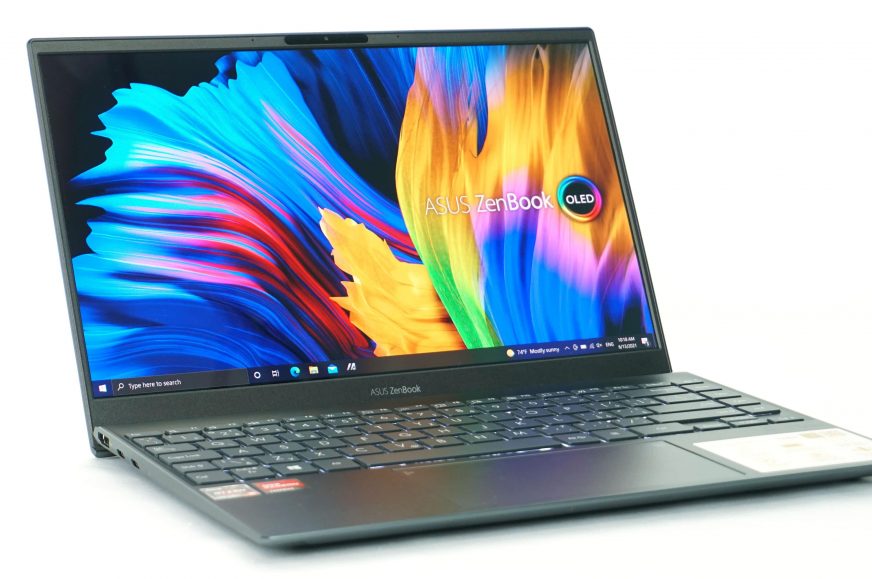Rendering and Geekbench
Last year, Asus introduced new ZenBooks, which are gradually improving, and in addition to new gen CPUs, we have also seen a change in display technology, which we have written about in a separate article. We got the cheapest model with an OLED display for the test. In addition to the 13-inch body, it also has a revamped Ryzen 5500U. We have only recently tested a configuration with Intel, so an interesting comparison is awaiting us.
Rendering, Geekbench
The OLED version of the ZenBook 13 surprisingly got the new Ryzen 5500U. We will compare the recently tested ZenBook 13 UX325E with the 11th generation Intel and also the ZenBook 14 with the 10th generation. It is interesting to watch how Asus switches between Intel and AMD intergenerationally, it is quite unusual.
Let’s start traditionally with Cinebench R15 for a first glance at the raw performance of the processor. The single-core performance is dominated by Intel with both 11th and 10th generation ahead of Ryzen, which offers similar performance as the Acer Swift 3 with 4700U. Compared to ZenBook 13 with i7-1165G7, the 5500U loses by up to 24%. On the contrary, the multi-core performance is fully in the hands of Ryzen. It has a 36% lead over its predecessor with Intel and the ZenBook 14 with the 10th generation Intel gets whooped and loses by 75%. Interestingly, the 5500U with 6 cores has a higher performance than the 4700U with 8. The reason is the difference in threads, as the 5500U offers SMT and therefore 12 threads instead of only 8 in the 4700U without SMT.
Cinebench R20 shows a slight improvement in single-core performance, where the 5500U is just 19% behind the i7-1165G7 and 4% ahead of the i7-1065G7. On the contrary, the differences in multi-core have increased and the piece with OLED offers 41% higher performance than the Intel version and beat the older bigger brother by up to 94%.
In the new 10-minute R23 test we can see similar results as in the older versions, i.e. a 23% loss in single-core and a 41% lead in multi-core, we do not yet have enough data to draw conclusions.
Blender and POV-Ray hands-on tests were a piece of cake for the new ZenBook, and beat the older version with Intel by 64 and 60%. It also overtook the Swift 3 by 5 and 16% with the last generation Ryzen 7. Interestingly, thanks to 12 threads, it reached the level and even beat the 8th and 9th generation Intel 45 W processors.
Single-core results in Geekbench 3–5 also show the loss of the ZenBook 13 OLED over the Intel 13 (-18/-35/-37%), the old 14 (14/-17/-13%) and the relatively balanced values with Swift 3 (18/0/-3%). We also see differences in multi-core, although this time the novelty is beating the competition—Intel 13 by (30/4/7%), the old 14 by (52/22/32%) and Swift 3 by (6/14/14%).
Compute graphic test shows that the Intel version 13 is 15/8% faster, while last-generation ZenBook 14 lags behind by -22/-33% and the Swift 3 with 4700U by -2/-11% behind the OLED version of ZenBook with 5500U. We will see if these results will be confirmed in other graphic tests.
- Contents
- Specifications and details
- Test methodology
- Display tests
- Rendering and Geekbench
- 3D/PC Mark and Unigine Heaven/Superposition
- Gaming tests – integrated graphics
- Encryption, encoding
- Memory and storage tests
- Temperatures and battery life
- Analysis of clock rate, power consumption and temperatures
- Conclusion











